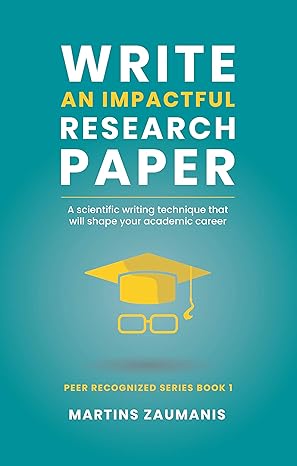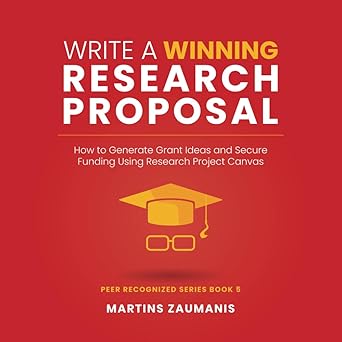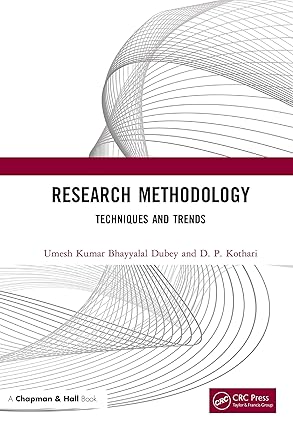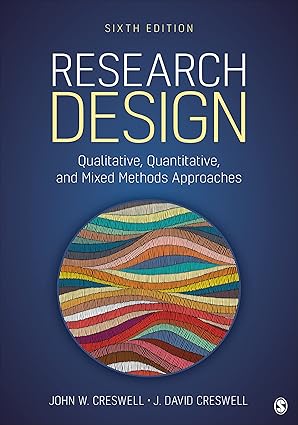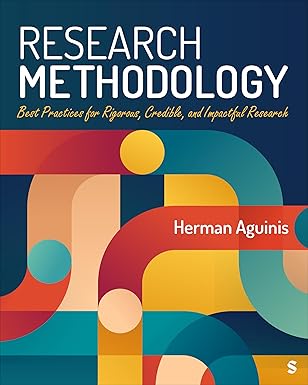Sometimes, despite careful preparation, many researchers find themselves facing rejections for their research proposals. This rejection can be a challenging part of the academic process, but it is essential to understand and reflect upon it. In this article, we will explore the various reasons why research proposals are rejected and how researchers can refine their approach to increase their chances of acceptance in the future.
Research Gap
One major reason for repeated rejection of research proposals is the lack of a clear research gap. Without a well-defined gap, a proposal often appears unnecessary or unoriginal. Reviewers, or examiners, need to see how the proposed study adds something new to the field. Without this, the research seems to repeat what is already known. To avoid rejection, focus first on identifying a meaningful gap. Use recent sources to support the claim.
A strong proposal starts by showing familiarity with current studies. Demonstrating what has been done helps to highlight what is still missing. That missing part is the research gap. Without this foundation, a proposal lacks direction and purpose. Even a good topic can fail if the proposal does not explain why the study is needed.
In the process of developing a research study, identifying a research gap is a crucial step that forms the foundation for justifying why the study is necessary. A research gap refers to an area or aspect within a field of study that has not been fully explored, understood, or agreed upon by previous researchers. By identifying this gap, researchers can contribute new insights to the existing body of knowledge and strengthen the relevance of their work. There are various types of research gaps that can serve as a starting point, ranging from a lack of empirical data and conflicting findings to unexplored contexts or perspectives. The following section will outline several common types of research gaps frequently encountered in academic literature.
Research Gaps in Methods and Methodology
Many research proposals get rejected because of gaps in methods and methodology. A common issue is the use of outdated or inappropriate methods that do not fit the research question. Sometimes, researchers choose a method simply because it is familiar, not because it is the best option for the study. This weakens the proposal, especially if the approach cannot produce reliable or valid results. Reviewers expect methods that are well-justified and aligned with the study’s objectives.
Another common gap appears when the methodology lacks detail or depth. Proposals often fail to explain how data will be collected, analyzed, or interpreted. Without a clear plan, the research process seems uncertain or poorly thought out. Sometimes, mixed methods are mentioned, but the integration of qualitative and quantitative data is not explained. This creates confusion and raises doubts about feasibility. Strong proposals show a clear, logical, and justified methodology that connects directly to the research problem.
Research Gaps in Theory (Theoretical Gap)
A theoretical gap refers to a missing or underdeveloped area within existing theories or conceptual frameworks. Many proposals are rejected because they fail to address this kind of gap. When a study does not clearly show how it contributes to theory, it appears less significant or merely practical. A strong proposal highlights where current theories fall short—whether in explaining certain phenomena, addressing new contexts, or integrating emerging concepts.
Some proposals mention theory only as background, without showing how the research will engage with or expand it. This leads to a weak theoretical foundation. Reviewers look for studies that go beyond applying theory—they want research that questions, refines, or builds upon it. Identifying contradictions, outdated assumptions, or unexplored dimensions within a theory can provide a strong basis for the study’s relevance.
In other cases, the chosen theory does not align well with the research question. A mismatch between theory and study focus signals a lack of critical thinking. For a proposal to stand out, it must not only identify a theoretical gap but also clearly explain how the research will address it. This includes showing how findings might contribute to deeper understanding, refinement, or even the development of new theoretical perspectives.
Conceptual Gap
A conceptual gap arises when key concepts or definitions within a research area remain unclear, inconsistent, or underdeveloped. Without a solid conceptual foundation, studies risk confusion and lack of focus. Many proposals get rejected because they fail to clarify how important terms are defined or how concepts relate to each other within the study’s framework.
Sometimes, existing research treats concepts differently, leading to conflicting interpretations. Identifying a conceptual gap involves recognizing these inconsistencies and proposing clearer or more comprehensive definitions. This helps to unify understanding and provides a stronger base for developing research questions and hypotheses.
Filling a conceptual gap also means exploring new ideas or frameworks that have not been applied before. Innovative approaches to defining or linking concepts can open fresh perspectives and guide future studies. Proposals that address conceptual gaps show originality and contribute to theory development, making them more attractive to reviewers.
Empirical Gap
An empirical gap occurs when there is a lack of data or insufficient evidence related to a specific topic, population, or context. Even if a theory exists or a concept has been discussed, the absence of real-world studies makes it difficult to validate or challenge existing assumptions. Many proposals get rejected because they do not clearly identify where such gaps exist in the current body of research. Highlighting an empirical gap involves showing that certain variables, relationships, or phenomena have not been tested, especially in specific settings or among certain groups.
In some cases, studies might exist but use weak or outdated data, small samples, or limited perspectives. This still leaves room for new empirical contributions. A strong research proposal identifies these shortcomings and offers a plan to collect better, more relevant data. Addressing an empirical gap helps justify the importance of the study, especially when the findings have the potential to influence practice, policy, or further research.
Contextual Gap
A contextual gap refers to the absence of research within a specific setting, location, culture, or population. Many existing studies may have been conducted in different countries, regions, or institutions, making their findings less applicable to other contexts. When a research proposal addresses an issue in a context that has not been explored before, it helps to fill this gap. Identifying a contextual gap shows that the study can provide localized insights that broader or foreign studies may not capture.
Often, theories or models are developed in Western or high-income countries and are then applied globally without considering cultural, economic, or institutional differences. This can lead to misleading assumptions or ineffective solutions when applied in different contexts. A proposal that highlights the need to test or adapt existing theories in a new setting—such as in a developing country, rural area, or underrepresented community—demonstrates clear relevance and originality.
Addressing a contextual gap also supports inclusivity in research. By exploring topics in diverse environments, the study contributes to a more complete and balanced understanding of the issue. It not only strengthens the global knowledge base but also ensures that under-researched communities are represented. Reviewers often value proposals that aim to produce context-specific knowledge, especially when it can inform local policy, education, or practice.
Practical Gap
A practical gap exists when research does not adequately address real-world problems or fail to provide solutions that can be applied in practice. Sometimes, studies focus heavily on theory or abstract concepts without linking findings to actual challenges faced by practitioners, policymakers, or communities. Identifying a practical gap means showing how a research project can have tangible benefits, such as improving processes, informing decisions, or solving specific issues.
Many research proposals overlook the importance of practicality, which can lead to rejection. Reviewers often seek studies that not only advance knowledge but also offer actionable outcomes. A proposal that clearly connects research goals to practical needs—whether in education, healthcare, business, or social services—stands out because it promises impact beyond academic circles.
Filling a practical gap involves designing research with real-life applications in mind. This might include testing interventions, developing tools, or evaluating programs in the field. By addressing a practical gap, research becomes more relevant and valuable, helping bridge the divide between theory and practice. This relevance often increases the chances of funding and support.
Temporal Gap
A temporal gap refers to the lack of recent or up-to-date research on a particular topic. Sometimes, existing studies are outdated, and new developments or changes have not been examined thoroughly. This gap highlights the need to revisit a subject with fresh data or perspectives to reflect current realities, technologies, or social conditions.
Research proposals that fail to address a temporal gap risk appearing irrelevant or obsolete. Reviewers expect studies to build on the most recent findings and adapt to evolving contexts. Identifying a temporal gap means recognizing that past research may no longer fully explain or capture current phenomena, creating space for updated investigations.
Addressing a temporal gap can involve longitudinal studies, replication of previous research with new samples, or exploring recent trends. Filling this gap ensures that knowledge stays current and applicable. Proposals emphasizing temporal gaps demonstrate responsiveness to change and can contribute to timely, impactful insights.
Scientific Contribution
Another main reason a research proposal is often rejected is the lack of a clear scientific contribution. Scientific contribution refers to the added value a study brings to existing knowledge. This can include new findings, innovative methodological approaches, the application of theory to a new context, or addressing unresolved issues in the literature. When researchers fail to articulate what their study will produce and why it matters, reviewers are likely to view the proposal as insubstantial or unworthy of funding.
Unclear contribution often stems from the failure to directly connect the study with the identified research gap. Researchers might mention a gap in the literature but fail to explain how their study will meaningfully address it. As a result, the research can appear redundant—simply repeating or confirming what is already known—rather than advancing understanding or offering a new perspective. In academic research, work that lacks novelty or urgency is typically seen as low in scientific value.
Weak contributions may also result from an inability to connect expected findings to broader impacts. A study might be technically sound, but if it does not explain how the results could influence practice, policy, or theoretical development, its scientific relevance becomes unclear. Reviewers are looking for research that will have a tangible impact—whether theoretical, practical, or societal.
For this reason, researchers need to explicitly state their scientific contribution within the proposal, typically in the background, objectives, and initial conclusion sections. These statements should be specific, measurable, and aligned with current research needs. Phrases such as "This study aims to develop model X within context Y, which has not yet been explored", or "This stydy/research introduces a new approach to measuring variable Z, which has been largely overlooked*", help clarify the intended contribution. In doing so, reviewers are more likely to recognize the study’s potential value and support its development.
The following are some other general examples of scientific contribution statements that you may consider including in your research proposal. These examples are designed to help clarify the added value of your study:
- This study aims to contribute to the existing body of knowledge by addressing an understudied aspect within the field.
- This research contributes to academic discourse by introducing a fresh perspective on an ongoing issue.
- By examining this issue in a new context, the research adds depth and diversity to the current literature.
- The findings of this research are expected to offer practical implications for professionals and policymakers.
- This study seeks to fill a gap in the literature by exploring a topic that has received limited academic attention.
The following are some examples of scientific contribution statements adopted from academic journal articles.
- This study contributes to the emerging field of AI in education and explores possibilities to use ChatGPT to foster self-directed language learning and provide educators, instructional designers, and researchers with insights to design learning integrated with AI to best fulfill learners’ diverse needs and expand learning opportunities to more people1.
- These findings underscore the importance of active engagement with online resources in academic success and provide valuable insights for educators and institutions in designing online courses and strategies to support student learning2.
The study also highlights the need for further research to understand the nuances of student engagement with e-learning resources2.
The implications of these findings extend beyond the pandemic, contributing to the broader discourse on e-learning and academic performance2. - We further discussed appropriate strategies and techniques to promote online teaching and learning excellence in transnational distance education3.
Research Methodology
The research methodology forms the essential foundation that determines the validity and reliability of a study’s findings. Therefore, selecting and designing an appropriate methodology is crucial when preparing a research proposal. A weak or inappropriate methodology is often a primary reason for proposal rejection because, without a clear and suitable method, the research results will be difficult to trust and unlikely to make a significant contribution. Researchers need to demonstrate that their chosen methods are well-suited to answer the research questions and address the problem effectively.
One common weakness is the mismatch between the type of research and the methods employed. For example, a study aiming to explore an in-depth understanding of social phenomena but relying solely on rigid quantitative methods without complementary qualitative approaches may be deemed inappropriate. Conversely, research that seeks to test hypotheses should utilize appropriate quantitative methods rather than descriptive studies without statistical analysis. Such mismatches indicate a lack of understanding of appropriate research methodologies by the researcher.
Additionally, insufficient detail in the methodology section can undermine reviewers’ confidence in the proposal. Proposals that merely mention the type of method without elaborating on data collection procedures, sampling techniques, measurement instruments, and data analysis processes are considered underdeveloped. Detailed explanations are necessary for reviewers to objectively assess the feasibility and rigor of the study. Lack of such information may raise doubts about the researcher’s ability to conduct the study properly.
The quality of research instruments is also a critical aspect of methodology. Using instruments that are invalid or unreliable can lead to inaccurate or biased data, making the results untrustworthy. Researchers must ensure that their measurement tools are either well-established or thoroughly validated before use. If new instruments are developed, the proposal should clearly explain the procedures for testing their validity and reliability.
Finally, inadequate planning for data analysis is another common methodological weakness. Researchers must select analytical techniques appropriate for the type of data and research objectives. Using inappropriate analysis can result in misinterpretation and misleading conclusions. Therefore, proposals that provide a detailed and accurate plan for data analysis are more likely to be accepted, as they demonstrate the researcher’s preparedness to produce valid and meaningful findings.
-
Li, Z., Wang, C., & Bonk, C.J. 2024. Exploring the Utility of ChatGPT for Self-directed Online Language Learning. Online Learning. doi: 10.24059/olj.v28i3.4497 ↩︎
-
Liu, D., Carter, L., & Lin, J. 2024. Towards Connectivism: Exploring Student Use of Online Learning Management Systems during the Covid-19 Pandemic. Online Learning. doi: 10.24059/olj.v28i2.4047 ↩︎ ↩︎ ↩︎
-
Ren, X. & Zhou, Y. 2024. Multifaceted challenges and opportunities: Chinese exchange students’ experiences in the U.S. transnational online learning ecology. Online Learning. doi: 10.24059/olj.v28i2.4090 ↩︎
